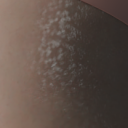Since the update - render quality changed
 digitaladiposity
Posts: 33
digitaladiposity
Posts: 33
I updated DAZ to 4.21.0.5 the other day, and noticed a change affecting highlights in Iray scenes made using a specific lighting preset (Fabiana's Theory of Light). The highlights appear blotchy and dappled at a render setting that gave photorealistic highlights in the previous version. Are there settings I need to change going forward with the new version, or do all these scenes just need to be re-lit?
PC: Z600 Dual Xeon 2.93, 24GB RAM
GPU: GTX 970 driver version 522.25, Q K620 for monitor output
[Edit: added missing word]


dappled_highlight.png
208 x 208 - 51K
Post edited by digitaladiposity on


Comments
How long did the render run? Are you sure it didn't stop for max time before reaching the desired convergence? With an RTX card memory is always going to be pushed, and the new version of Iray (depending on what you updated from) may simply be asking for more memory than the card has, and so dropping to CPU if that is enabled, while befroe it was just managing.
I noticed significant changes in the handling of convergence in, I think, 4.20; for sure it was before 4.21. It is conceivable that these changes only affect those of us who render with canvases; I don't know because I always do canvas renders.
More generally even very small changes can make a massive difference if you render with Render Settings/Progressive Render/Rendering Converged Ratio set to anything other than 100%. This is because less than 100% causes some significant proportion of the pixels in your final image to be ignored; very slight shifts in what pixels are ignored can shift non-convergence from an irrelevant part of the image to a relevant part. I never render with a ratio other than 100% so I don't see this.
If you are doing that, apart from repeating my advice from other threads ("don't"), you might want to look at memory issues as @Richard seems to imply. Shifting from GPU to CPU will majorly affect your image - the whole rendering seems to change massively (so I disabled CPU rendering years ago ;-) What I did notice with 4.21 is that the out-of-memory (OOM) handling seems to be even better than 4.20, and 4.20 was a significant improvement. I render at the limit of my card; if I'm not at the limit. Often I have to restart Studio to avoid having it do the Black Screen Of No Render on me. 4.21, however, manages very well to run close to the GPU memory more than half the time. I think this means that it is being more proactive in things like texture compression. That will fundamentally alter which pixels converge first, and the result will vary depending on when you run the render (like, after a dForce or Iray preview; less memory available). That change alone will make significant differences to the result of having RCR set to less than 100%; compressed textures converge have less noise than uncompressed ones and this fundamentally affects everything.
All in all I'm much in favor of 4.21; my character's eyes are wandering, but that's an old bug that has reappeared and I know how to fix it. With that caveat the better memory handling, which, of course, might also be due to the NVidia driver update I did at the same time as 4.21, and, maybe, slightly less dForce explosions seem excellent.
I let the render run for the same number of iterations as the previous version, using the exact same settings. I do not have an RTX card. I updated from the immediately previous version. It looks like I need to change my settings and eventually upgrade my GPU, which is listed in my post.
I'm also using a 100% ratio. I will uncheck CPU in the Advanced settings (fallback was already disabled years ago), and try again. I've come to accept that it's probably time to upgrade to RTX, but it will have to wait.
You also need "Max Samples" to "-1" (edit via the parameters dialog) and "Max Time (secs)" to 0, otherwise the 100% convergence typically has no effect unless you have set "Render Quality" to something really low, like 0.1
Your other comment implies that you are limiting the number of iterations; that, along with limiting the time, is just as sure a way of getting random unconverged pixels. I only use it for true animations where the frame is going to be on display for so little time that noise doesn't matter (and, maybe, I turn on the denoiser then.)